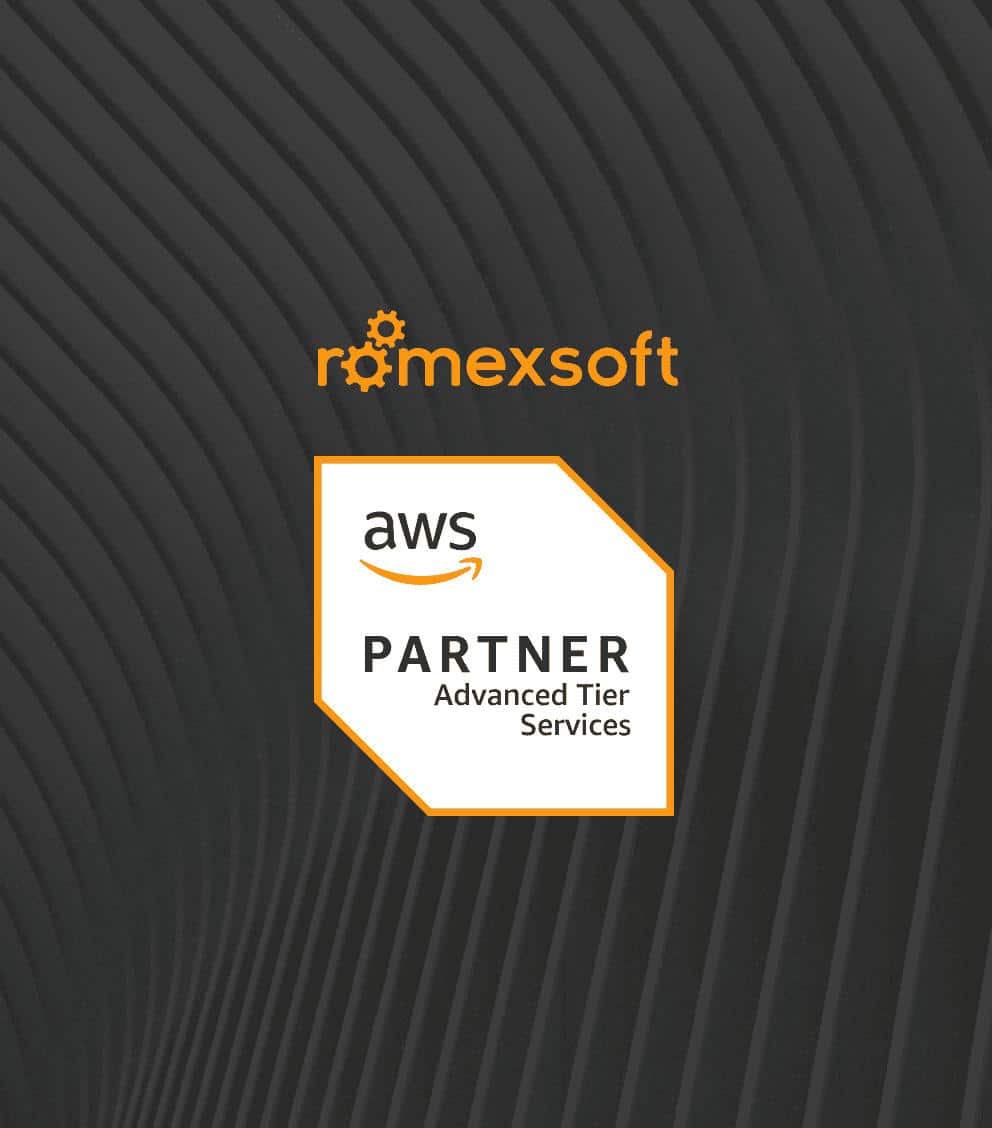How to Ensure the Security of a Data Lake? Key Risks, Controls, and AWS Solutions
This article explains how to ensure the security of a data lake and why it’s essential to incorporate it from the planning stage onward. As threats continue to evolve, your security must be able to cope with the rising challenges, which will require thorough planning, solid foundations, and effective monitoring, auditing, and alert processes.
The blog gives an overview of:
- what a data lake is and why its security matters
- core data lake security domains
- the technical and compliance challenges in securing a data lake
- comparison of SDL and SIEM
- architecture-level and operational best practices for securing data lakes on AWS

Table of Contents
Today, engineers and development teams must secure not only applications and infrastructure but also the data generated by them. Every component, from VPC Flow Logs and CloudTrail to endpoint detection tools, produces massive volumes of security telemetry. Because these logs arrive in different formats and are often processed in isolated tools, organizations struggle with silos, inconsistent visibility, operational overhead, and rising storage costs.
A data lake is a general‑purpose repository that stores all types of data in raw form. Therefore, it can store structured, semi‑structured, and unstructured data as is. This data can be used for analytics, training Machine Learning (ML) models, and retained for long-term adherence to compliance requirements.
However, data lakes are a prime target for cybercriminals seeking sensitive information, making them a significant vulnerability. Therefore, you must ensure multi-layered security that will protect the data at various levels, from access controls to encryption.
This article will explain how to address these issues by consolidating data into data lakes and securing them with best-practice controls. Implementing them will allow you to keep the platform itself protected and compliant.
Table of Contents
What Is Data Lake Security?
The security of a data lake encompasses a set of controls, policies, and technologies that protect the data stored within it, as well as its infrastructure and access. Ensuring protection throughout the entire data lake lifecycle (from ingestion to processing and consumption) requires a multi-layered approach that begins at the platform inception stage.
Core Components of Data Lake Security
A secure data lake comprises several components that form the conceptual foundation on which specific technical practices can be later implemented.
- Access Control and Authentication. Adequate controls require precise definitions of who is allowed in, what actions they can take, and how those permissions are granted or revoked. The priority is to prevent misuse, enforce accountability, and preserve the principle of least privilege.
- Data Protection. It’s enforced using encryption during both data storage and transit, ensuring it cannot be read or altered by unauthorized parties. The goal of this domain is to preserve confidentiality, integrity, and resilience even if other defenses fail.
- Key Management. Encryption is only as strong as the controls around the keys, so it’s essential to ensure they are correctly created, rotated, and retired without disrupting operations.
Monitoring and Threat Detection. This domain focuses on visibility and continuously observing how data is accessed and used. Anomalies must be detected immediately, with alerts going out to teams before risks escalate. - Governance and Compliance. Beyond technical defenses, security needs to align with legal, regulatory, and organizational requirements, such as HIPAA, GDPR, etc. This can be ensured through monitoring, audits, and the implementation of specialized control policies.
Why Is Securing a Data Lake Important?
Creating and securing a data lake means protecting your organization’s most valuable asset, information, which underpins reliable big data services and analytics initiatives. As cloud systems inherently have vulnerabilities in data management and protection, it is essential to implement and maintain reliable security data lake practices from the planning stage to protect sensitive information. Doing this will allow you to:
- Ensure regulatory compliance with GDPR, HIPAA, PCI DSS, or other legal and regulatory frameworks.
- Protect sensitive data, thereby enhancing customer trust and reducing potential financial losses in the event of an attack.
- Maintain data availability, integrity, and accuracy by protecting against unauthorized modifications and creating solid backups.
- Support secure data sharing when collaborating with other businesses in and outside of the country.
- Future-proof against evolving threats by building dynamic defenses that evolve to meet them.
Security Gaps to Address in Data Lake Architectures
To implement best security data lake practices, you need to address the challenges from both technical and compliance perspectives.
Technical Issues
- Log Data Volume Growth
Log data from diverse systems is increasing exponentially. Therefore, you must plan for flexibility and fast scaling capability to keep up with large distributed logs, such as network traffic, application events, and endpoint monitoring. Legacy systems are often unable to handle this volume of data, making an upgrade a necessity. - Proliferation of Security Tools and Disparate Systems
When an organization uses multiple monitoring and security tools that generate different types of data, centralizing the system is challenging. In this case, analysts may struggle to detect and resolve issues quickly. Therefore, it’s crucial to build a system with a cohesive reporting pipeline to minimize overhead. - Lack of Standards and Interoperability
Automation provides the efficiency and responsiveness that data lakes require for security. However, it’s impossible to implement without standardization. The solution is designing a system of standards that ensures quick and efficient correlation across tools. It’s also crucial for ensuring compliance in governance and reporting frameworks. - Encryption and Key Management Complexity
Data encryption at rest and in transit is the basis of securing a data lake. However, many organizations struggle with ensuring key security across multiple environments and regions. This matter must be addressed through coordinated policies for key rotation, revocation, and multi-regional reapplication. - Logging, Auditing, and Query Performance
Data lakes require advanced indexing and scalable search systems to manage the high volume of log information effectively. Without this, querying and correlating logs takes too much time, which poses security risks, including forensic visibility issues. - Manual Orchestration and Operational Overhead
If data lake setup processes, such as catalog creation, access rules, and workflow setup, are handled manually, the risk of human error is significant. To speed up and protect initial deployment, you’ll need to rely on effective automation. - Data Classification and Governance Gaps
Establish a robust governance framework from the outset to minimize issues related to sensitive identification. There are some specialized classification tools, but they are often hard to integrate smoothly. Additionally, they might not perform effectively at scale.
Compliance Risks
- Long-Term Security Log Retention
Plan for security logs and audit data storage lifecycle at the inception of the system, as it’s often a mandatory regulation. Without a well-planned strategy, it can be challenging to manage archival storage as well as data deletion and expiration at scale. - Visibility into Required Log Data
It’s necessary to demonstrate proper oversight during audits and ensure that your security experts can effectively reconstruct incidents. For this, you need a fine-tuned system that captures various event types and logs them with sufficient details for future investigation. - Privacy and Data Protection Requirements
If your organization must comply with CCPA, GDPR, or other regulations, you require a system tailored to these requirements. It will enable you to keep a data lake secure while deleting personal data upon request, and limit access and tracing information through raw logs, derived datasets, and backups. - Industry-Specific Frameworks
To maintain compliance with HIPAA, PCI DSS, and other similar standards, your organization requires strict data encryption, audit trails, and access control. Additionally, some of these frameworks may not encompass newer technologies, creating ambiguous gaps in security data lake planning. - Cross-Organization and Third-Party Data Sharing
When sharing data both within and outside your business, you face liability risks. Be sure to check your compliance requirements, as usually the original data controller is responsible for total oversight. - Proving and Maintaining Compliance
In order to prove your compliance with specialized regulations, provide auditors with evidence of encryption, access reviews, retention, and monitoring. To achieve this, your security system for the data lake must be able to collect and collate this data easily.
Security Data Lake vs. SIEM
To avoid confusion and ensure a well-protected environment, it is essential to understand the differences between SDL and SIEM. A Security Data Lake (SDL) and a Security Information and Event Management (SIEM) platform are two distinctly different components of a mature security strategy. An SDL is a centralized repository that stores raw security data from multiple sources in its native format. It uses the schema-on-read model and ingests data as-is. It will apply structure to the data when appropriately queried.
The benefits of using a Security Data Lake include:
- Unlimited scalability
- Cost-efficient long-term retention
- Ability to run advanced analytics
- Ability to perform retrospective threat hunting
- Information for Machine Learning model training
The primary purpose of a SIEM platform is to detect threats, correlate events, and provide real-time compliance reporting. Unlike SDL, it employs the schema-on-write model to normalize and analyze data as it’s ingested. Therefore, these security tools are capable of instant detection and alerting, making them essential for minimizing damage. They can also generate compliance-ready reports for HIPAA, PCI DSS, GDPR, and similar standards. However, their information retention capability is limited to a few weeks at most.
Both SDL and SIEM are integral for an effective security system. The platform serves as the first line of defense, monitoring and detecting threats in real-time. Meanwhile, the Security Data Lake provides back-end depth necessary for deep forensic investigations. The years of data accumulated in an SDL are integral for trend analysis and compliance audits.
Best Practices for Data Lake Security on AWS
Strong architectural design and disciplined operational execution are both essential to realize data lake security best practices on AWS. As lakes combine various types of data, traditional perimeter-based systems can’t provide efficient defenses. Therefore, we outline the factors that must be accounted for when securing such environments and how to implement them to maximum effect.
Infrastructure Security Controls
Start with the basics by ensuring the security of the environment where the data lake runs. These are core practices that you can build upon to create multi-layered defenses that use specialized AWS tools for automation and a higher protection factor.
Centrally Governed, Least-Privilege Access
First, centralize access control in AWS Lake Formation. It can integrate with IAM to manage permissions at the database, table, and column levels. Next, create role-based access patterns for groups, such as Data Analysts, Data Scientists, Security Engineers, etc.
You should also restrict raw Amazon S3 access using fine-grained bucket policies or Lake Formation grants to prevent users from bypassing governance. This allows you to enforce the principle of least privilege access and helps meet the requirements for handling sensitive information in compliance with specific frameworks.
End-to-End Encryption by Default
Enable server-side encryption (SSE-KMS) on all Amazon S3 buckets to protect data at rest. Manage key rotation, revocation, and audit trails in AWS KMS.
Enforce HTTPS-only access and use VPC Endpoints or PrivateLink to safeguard data in transit, ensuring it remains within the AWS network. This setup allows you to comply with regulatory frameworks, including HIPAA, PCI DSS, and GDPR.
Locked-Down Perimeter and Private Networking
Use S3 Block Public Access at both the account and bucket level to prevent accidental public exposure. In addition, replace all legacy ACLs with IAM and bucket policies that only allow known principals.
Implement network segmentation with Security Groups and NACLs to limit lateral movement and reduce attack surface. You should also minimize exposure to outside threats by restricting analytics platforms, such as Athena or Redshift, to private subnets. Only allow connections from whitelisted IPs or trusted VPCs.
Secure Configuration of Storage and Services
Enable S3 Versioning and MFA Delete on critical buckets. This allows you to harden the security of the data lake environment and protect against deletions, both accidental and malicious. Deploy EC2-based consumers and notebooks in private subnets to limit public internet access.
Set Object Ownership = Bucket Owner Enforced and disable ACLs to consolidate access management into IAM. Moreover, ensure that outputs from Glue jobs, Athena queries, and Redshift tables are encrypted. Additionally, use AWS Glue Data Catalog with tagging in Lake Formation to track ownership, sensitivity, and retention policies.
Data Architecture Principles
To ensure compliance with regulatory frameworks and derive long-term value from a data lake, it is essential to implement best security data management practices. These govern how security data is ingested, standardized, retained, and reused. They cover every aspect of architecture design, including security data aggregation and distribution.
Centralize, Normalize, and Standardize Security Logs
Centralize in order to remove silos and facilitate visibility and efficient data management. You can achieve this by designing your lake to aggregate logs from AWS, hybrid, and multi-cloud environments into one location, such as Amazon S3 with Security Lake.
Normalize to enforce a consistent data format across diverse sources. Build on the Open Cybersecurity Schema Framework (OCSF) to provide a standard schema and eliminate custom ETL for each source. Additionally, this will facilitate automation and enable cross-tool correlation, making investigations easier. By implementing these practices together, you will get a unified, queryable security data store and a consistent foundation for analytics.
Data Lifecycle Management and Retention Policies
You need to architect clear security data lifecycle rules from the beginning. For example, use S3 Standard to keep logs for 12 months. Then, transition to S3 Glacier Deep Archive for long-term retention required under legal frameworks. Finally, expire data beyond the compliance horizon.
Implement the “data lake first” approach to ensure raw data is written to S3 before it’s pushed down to SIEM platforms or partner tools. This is necessary to provide an immutable record to meet any forensic and compliance needs. This approach also allows you to reduce storage costs without compromising historical visibility.
Automate Data Lake Operations and Integrations
You can speed up and facilitate many processes by automating repetitive setup tasks with AWS Security Lake. For example, you can automate Glue Catalog creation, Lake Formation permissions, S3 bucket provisioning, and Lambda orchestration.
In addition, you should leverage AWS partner integrations that already support OCSF (such as Splunk, CrowdStrike, or Datadog) to ensure extensibility. It’s an effective method to future-proof the data lake and reduce manual overhead by ensuring its compatibility with AWS-native and third-party tools.
Fine-Grained Distribution and Aggregation of Security Data
You should aim to optimize data consumption by architecting your subscriptions and telemetry flows using Security Lake’s selective data subscription. It allows you to control which tools receive which subsets of data.
Meanwhile, you also need to aggregate findings and telemetry from both AWS-native (GuardDuty, Inspector, Macie, CloudTrail) and partner sources into AWS Security Hub. Then, ensure full log retention by funneling that data into Security Lake. You will also provide targeted distribution downstream and reduce alert fatigue.
Separation of Concerns and Open Formats
One of your main security goals should be to prevent vendor lock-in. It’s necessary to keep the environment flexible and allow for component replacement and independent scaling. You should also use open formats to keep the data lake reusable across multiple analytics and security platforms.
To achieve this, structure your architecture in modular layers. The first is ingestion with Security Lake collectors, Firehose, and Kinesis. Next is storage using S3 with open formats, such as Parquet and OCSF. Finally, the query/analytics layer that uses Athena, Redshift, EMR, or third-party tools.
Foundational Operations Practices to Apply
Note that you need to plan beyond the deployment when it comes to security controls operations. Additionally, ensure continuous monitoring, governance, and adaptation to maintain ongoing effectiveness.
Continuous Monitoring and Threat Detection
You can log API and data access across the lake by enabling AWS CloudTrail and track key metrics and alarms through Amazon CloudWatch.
Then, use Amazon GuardDuty to analyze the logs for anomalies and deploy Amazon Macie to automatically discover sensitive data in S3, sending alerts for unusual patterns. This combination of tools allows for early detection and forensic readiness.
Regular Access Reviews and Drift Detection
In order to ensure you maintain the least privilege access, you should schedule regular audits of IAM roles, policies, and Lake Formation grants.
During those, you can use AWS Config rules to detect drift in bucket or IAM policies and capture any changes. You also need to enable the IAM Access Analyzer to identify broad or cross-account exposures, which is necessary to comply with governance requirements and prevent privilege creep.
Governance and Data Classification in Operation
Use Amazon Macie to automate the discovery of sensitive data and apply LF-Tags in Lake Formation. Maintain metadata in AWS Glue Data Catalog.
Meanwhile, implement AWS Security Hub or Audit Manager to evaluate your governance posture. Use this to enforce stronger controls for high-sensitivity cases and ensure investment security.
Incident Response Planning and Testing
You’ll need to create data-lake-specific playbooks. They must include the isolation of affected buckets, credentials invalidation, and centralized log analysis. Also, aggregate all CloudTrail logs, S3 access logs, and Security Lake data into a single dedicated logging account.
Trigger alerts on any IAM policy changes and GuardDuty findings using Amazon EventBridge. You can also run tabletop exercises and game days to collect new information and update your playbooks accordingly.
Advanced Operations
With well-established foundations, you can ensure an intelligence-driven and cross-functional use of the data lake by implementing the following best practices.
Query and Visualize Data for Investigations
Start operation by querying and visualizing collected telemetry using Amazon Athena, Amazon QuickSight, or Amazon OpenSearch Service. You can also use specialized third-party tools, such as SIEMs like Splunk, QRadar, or Trellix.
Visualization is a valuable tool that simplifies investigations and enhances communication with stakeholders. Your analysts can run ad-hoc SQL searches and build dashboards that showcase trending patterns.
Enrichment with Contextual Data
You should use enrichment data sources to enhance investigations and improve threat hunting. Layer in context to transform raw logs into actionable intelligence.
Types of enrichment data sources you can use for this purpose include threat intelligence feeds (open-source or commercial), business context (asset ownership, user identity), and data from external services, such as VirusTotal, AbuseIPDB, and DomainTools.
Automate Routine Queries and Reporting
Recurring queries, such as VPC flows comparison against known IOCs, can be scheduled for ease and effectiveness. You can do this in Athena or OpenSearch.
You can also automate workflows using AWS Step Functions and AWS Lambda. They will deliver reports regularly via Slack or email. Therefore, you will stay apprised of the situation without any manual effort.
Continuously Update Threat Intelligence
For maximum protection, implement pipelines to ingest and refresh threat intelligence on a daily basis. You can integrate these feeds directly into Security Lake to ensure that enrichment workflows and scheduled queries use the latest information and indicators.
You will minimize the risks as long as you are able to maintain your detection queries current with the ever-evolving threats.
Data Lake Security FAQ
When talking about a data lake, data is encrypted both in transit and at rest. Encryption allows you to ensure that, should all other defenses fall, sensitive information remains as protected as possible.
- Encrypt data at rest using strong algorithms, such as AES-256. This way, you can protect all objects stored in Amazon S3. Additionally, utilize AWS Key Management Service (KMS) to manage and rotate keys, generate audit logs of their usage, and enforce policies governing who can access which key.
- To encrypt data in transit, enforce TLS/SSL for all connections. This prevents data from being intercepted or altered while it’s moving between ingestion pipelines, processing services, and analytic tools.
If your organization must meet specialized compliance requirements, such as GDPR or HIPAA, you must embed encryption into the system architecture from the start. These frameworks usually require cryptographic data protection by default.
Moreover, should a breach occur, encryption will help you reduce the damage. The data will remain unreadable without the keys, even if the criminals manage to steal it.
Access controls do precisely what the name implies, meaning they control who can access data within the data lake and what they can do with it. Permissions must be aligned with user roles to ensure that each user (analyst, engineer, etc.) can access only what they need to fulfill their role. This reduces the risks of misuse and unauthorized changes, including both malicious and accidental alterations.
By combining strict access controls with auditing and fine-grained policies, you can ensure that the data lake remains compliant and maintains security integrity.
Both auditing and monitoring are essential for ensuring the security of a data lake, as these processes detect suspicious activities and provide your teams with an opportunity to respond before the issue escalates.
They are also crucial for proving and maintaining compliance with security policies and frameworks. Moreover, data collected through continuous monitoring and auditing can be used for progressive security improvements and training ML models.
Yes, it’s possible to integrate the security of a data lake into an existing system. There are two main ways to go about it:
- Implementing identity federation with AWS Identity and Access Management (IAM) allows users to authenticate their credentials from corporate directories and assume temporary AWS roles. To achieve this, you would typically use SAML 2.0 or OIDC standards to connect AWS to identity providers (Microsoft AD FS, Azure AD, Okta, or Ping).
- If you want to maintain central control, use AWS IAM Identity Center (the successor to AWS SSO) to implement native integration with AD and popular cloud identity providers. In this case, groups defined in your enterprise directory will be mapped to AWS roles and used directly within Lake Formation. This service will require fine-grained permissions at the database, table, and column levels. When established correctly, this approach enables users to log in to AWS using corporate SSO credentials.



